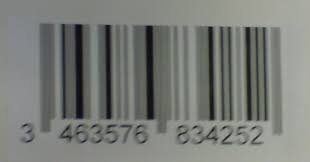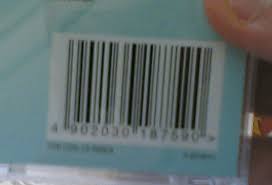Barcodes play a crucial role in retail, logistics, and inventory management, providing a standardized method for tracking and identifying products. However, encountering a blurry barcode can be frustrating and lead to delays or errors in scanning. This article delves into the world of Blurry Barcodes, exploring their causes, implications, and potential solutions to ensure smooth barcode scanning operations.

- The Basics of Barcodes: To understand the impact of Blurry Barcodes, it is essential to grasp the fundamentals of barcodes. This section provides an overview of barcode technology, explaining how barcodes are encoded, scanned, and interpreted. It highlights the importance of clear and readable barcodes for efficient inventory management and customer service.
- Common Causes of Blurry Bar-codes: Blurry Barcodes can arise due to various factors. This section explores the common causes of barcode blurriness, including printing issues, low-quality barcode labels, damaged or smudged labels, or scanning equipment problems. Understanding the root causes can help identify potential solutions and preventive measures.
- Implications of Blurry Bar-codes: Blurry Barcodes have significant implications for businesses, consumers, and the overall supply chain. This section discusses the consequences of unreadable barcodes, such as delays in product scanning, inventory inaccuracies, customer dissatisfaction, and potential revenue losses. It emphasizes the importance of clear and legible barcodes for smooth business operations.
- Mitigating Blurry Bar-codes: Addressing the issue of Blurry Bar-codes requires proactive measures. This section explores potential solutions and preventive strategies. It includes recommendations such as using high-quality barcode labels, ensuring optimal printing conditions, implementing regular maintenance of scanning equipment, and employing image enhancement technologies to improve barcode clarity.
- Technological Advancements: Advancements in barcode scanning technology and image recognition algorithms have significantly improved barcode readability. This section discusses emerging technologies, such as high-resolution cameras, intelligent image processing software, and machine learning algorithms, that enhance barcode scanning accuracy and reduce the impact of Blurry Bar-codes.
- Data Validation and Error Correction: To mitigate the impact of Blurry Bar-codes, data validation, and error correction techniques can be employed. This section explores methods such as checksum validation, redundant encoding, and error correction algorithms that can help ensure accurate decoding even when barcodes are less than optimal. By implementing these techniques, businesses can enhance the reliability of barcode scanning processes.
- Employee Training and Awareness: Another crucial aspect of mitigating Blurry Bar-codes is providing comprehensive training to employees involved in barcode scanning operations. This section emphasizes the importance of educating staff on barcode scanning best practices, proper handling of barcode labels, and recognizing potential issues with Blurry Bar-codes. Well-trained employees can identify and address blurry barcode challenges promptly, minimizing disruptions and ensuring accurate data capture.
- Continuous Improvement and Quality Control: Maintaining a culture of continuous improvement and quality control is essential in preventing and addressing blurry barcode issues. This section explores the importance of regular monitoring, testing, and evaluation of barcode printing and scanning processes. By implementing robust quality control measures, businesses can identify potential sources of blurriness, implement corrective actions, and continually optimize barcode scanning performance.

Blurry Bar-codes can disrupt business operations, hinder inventory management, and impact customer experiences. By understanding the causes and implications of Blurry Bar-codes, businesses can take proactive steps to ensure barcode readability and optimize scanning efficiency. Implementing preventive measures, such as using high-quality labels, maintaining printing standards, and leveraging advanced scanning technologies, can help mitigate the occurrence of Blurry Bar-codes.
As technology continues to evolve, barcode scanning processes are becoming more efficient and accurate. Emerging advancements in image recognition and machine learning algorithms offer promising solutions to address the challenges associated with Blurry Bar-codes. By staying informed about the latest developments and adopting best practices, businesses can ensure smooth barcode scanning operations, enhance productivity, and deliver exceptional customer service.
Technological advancements in barcode scanning, such as high-resolution cameras, intelligent image processing software, and machine learning algorithms, offer promising solutions to enhance barcode readability. Leveraging these advancements can improve scanning accuracy and reduce the impact of Blurry Bar-codes.
It is vital for businesses to stay informed about emerging technologies and best practices in barcode scanning. By adopting preventive strategies and embracing advancements, organizations can optimize their operations, enhance productivity, and deliver exceptional customer service.
As technology continues to evolve, the challenges associated with Blurry Bar-codes are being addressed. With a proactive approach and continuous improvement, businesses can minimize disruptions caused by Blurry Bar-codes and ensure the reliability and efficiency of barcode scanning processes.
In conclusion, Blurry Bar-codes pose challenges in barcode scanning, but they can be overcome with proper measures. By prioritizing barcode quality, implementing preventive strategies, and embracing technological advancements, organizations can maintain seamless operations and enhance their overall efficiency in the barcode-driven landscape. Ultimately, the goal is to provide accurate and reliable barcode scanning experiences, ensuring smooth business processes and customer satisfaction.